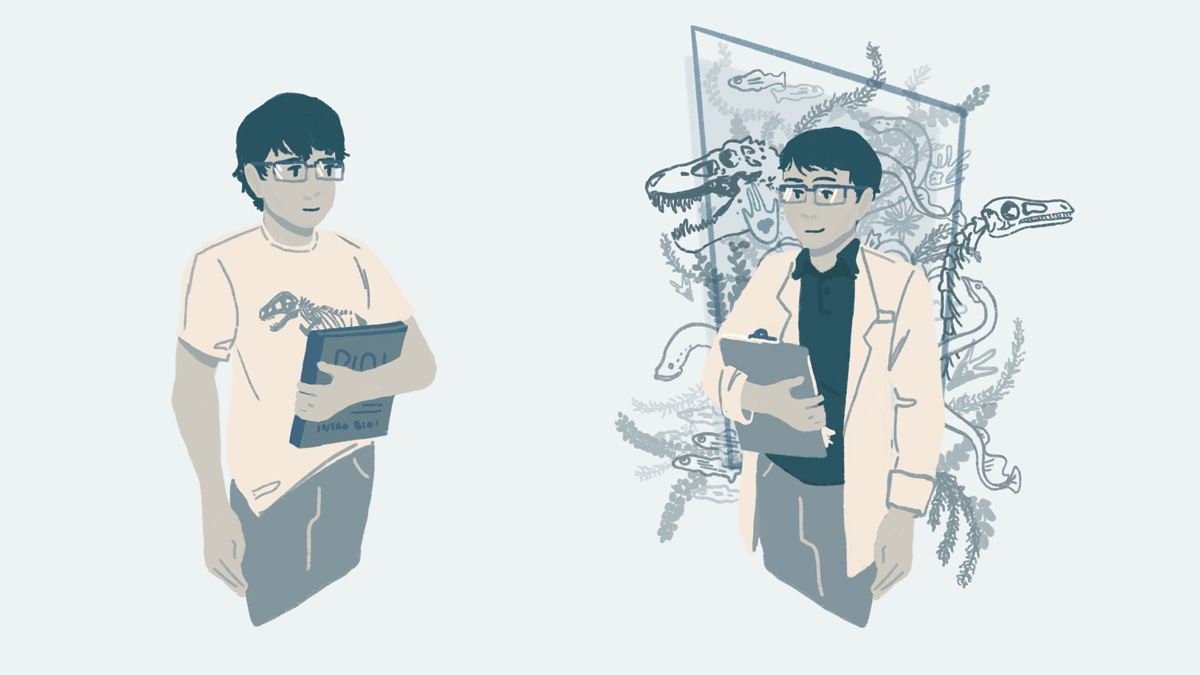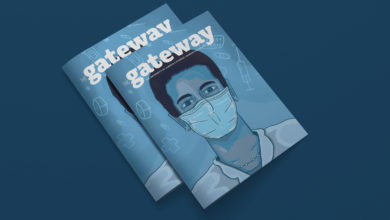Academic Journeys: Tetsuto Miyashita
 Alex Patterson
Alex PattersonIn his home country of Japan, eight-year-old Tetsuto Miyashita fell in love with dinosaurs while watching a local screening of Jurassic Park.
By age 10, Miyashita’s parents had bought him a book about dinosaurs by Phil Currie, the University of Alberta’s world-renowned paleontologist and the then-curator of the Royal Terrell Museum. Reading about Currie’s discovery of a stegosaurus skeleton, Miyashita decided to become a paleontologist.
“I was fascinated by (Currie’s) life story, his anecdotes from the field, and how he discovered dinosaur fossils,” Miyashita says. “He became my childhood hero.”
Miyashita learned English in junior high and wrote a fan letter to Currie. When Miyashita wrote that he wanted to work under Currie as a student, Currie suggested that he come to Drumheller at some point to study dinosaurs.
Currie meant this as a suggestion for graduate studies after Miyashita’s high school and undergrad, but that was lost in translation.
“I took (the suggestion) as an invitation from Phil so I decided to move to Drumheller pretty much right away,” he says. “One wintery day, I made my move to Canada and showed up at the museum and dropped by his office, and now here I am.”
At 16, Miyashita was living with a family, attending high school in Drumheller, and working at the museum with Currie.
“Maybe the hardest time was at the local high school,” he says. “I was the only Asian student and of course people didn’t really understand the concept of moving over across the Pacific Ocean just to be close to dinosaurs.”
Miyashita describes Currie as a “default father.” When Currie accepted a role as a paleontology professor at the U of A, Miyashita followed him to start an undergraduate degree in biological sciences. He moved into Currie’s household, and they’ve been living together since.
Before coming to the U of A, Miyashita says he only thought in terms of dinosaurs, but the biological sciences program taught him that dinosaurs didn’t live in a vacuum. Now, he’s turned his attention towards different organisms. In the first year of his Master’s program at the U of A, Miyashita was sent to Friday Harbour Laboratories on San Juan Island to research under a professor who taught him about the importance of close observation in biological research. There, Miyashita discovered that arms of larval sea urchins grow at different speeds, allowing them to swim in a spiral.
Now, in the last year of his PhD at the U of A, Miyashita is working from the California Institute of Technology trying to identify the genetic programs in fish that gave rise to the modern skeletal jaw.
After he graduates, he’s looking at pursuing post-doctoral work at Stanford University on a group of worms that have the same embryonic signalling centres as those in embryonic vertebrate animals. He hopes to one day connect all of this research back to his first love: dinosaurs.
“I’m surprised by what I’m doing actually, day to day,” he says. “When I was 16 I never imagined that it would take lampreys, zebrafish, and sea urchin larvae to actually understand anything about dinosaurs.”




